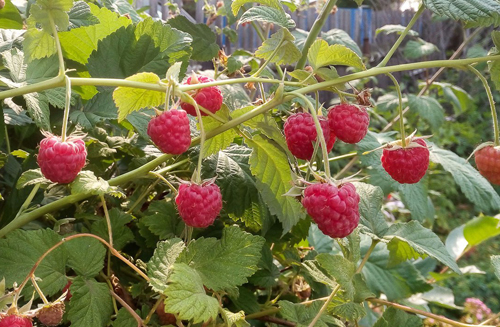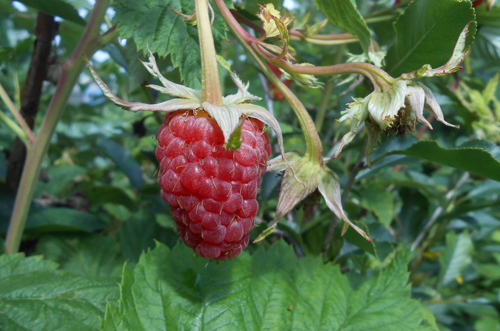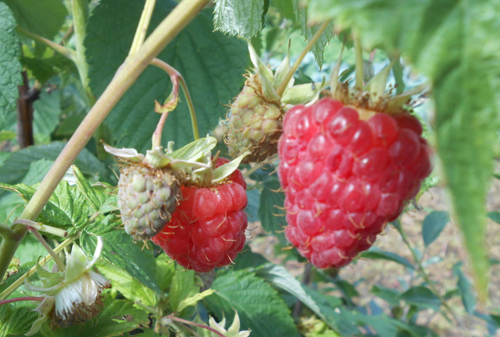Raspberry variety Novost Kuzmina
Surprisingly, varieties of crops that were bred more than a century ago are still found in our garden and garden plots. Their appearance in those days was a real breakthrough into the future, and until now these outstanding varieties for their time do not lose their relevance and do not go into oblivion under the pressure of new generations of hybrid and varietal forms.

One of such "old-timers" and "veterans" of domestic breeding can be deservedly considered the Novost Kuzmina variety, which was born in the century before last, and was officially registered in the state register of breeding achievements back in 1947. The author of this raspberry is a self-taught researcher, a descendant of Bashkir serfs, Nikanor V. Kuzmin. In 1878 he settled in the village. Vetluga of the Nizhny Novgorod province, where in his garden he organized a kind of variety testing site. His first experiments on the acclimatization of fruit plants were unsuccessful, but this did not shake his resolve, and on the advice of I.V. Michurin, he took up real breeding research in the harsh conditions of the Russian north, sowing hybrid seeds and selecting seedlings that were superior to parental forms in their characteristics. In this way, at the end of the 19th century, his perhaps the most famous brainchild at the moment was born, which came from the crossing of an even more ancient domestic variety of raspberries Smelyanskaya and American Cuthbert.
The first documentary evidence of the existence of Kuzmin's News dates back to 1909, when a description of this variety, made by Vladimir Mikhailovich Krutovsky, appeared in the magazine "Progressive Gardening and Horticulture", who received planting material in 1906, shortly before the death of the originator of the variety. In Soviet times, the creation of Nikanor Vonifatyevich was widely spread, and was zoned in dozens of regions of the RSFSR, and also used in the development of a dozen new forms of raspberries.

Agrobiological characteristics
Bushes grow large and spreading, in ideal conditions, their height can reach 2-2.5 meters. The root system is quite voluminous, powerful, but located close to the surface of the earth. The activity of formation of replacement shoots is average - about 15-20 pieces per meter at a young age, and as the plants age, this value gradually decreases. It practically does not produce root offspring, which makes it easy to maintain the plantation in a neat and well-groomed form, however, it causes certain difficulties with reproduction. Young shoots grow evenly from the ground, are distinguished by a large distance between the nodes, curved tops, as well as an intense waxy bloom on the surface. They are protected by thin purple thorns, moderate in length and degree of rigidity, the density of which increases closer to the ground. In the second year, the shoots continue to maintain an average thorniness, have a geniculate structure and a hanging appearance. Their last year's light green color changes to brown. Leaves News Kuzmin grow quite large, collected in a trefoil, with a slightly wrinkled surface, can be somewhat curled. Small thorns can also be found on the back of the raspberry leaf blades.
Flowering occurs in medium terms. The flowers are white, while, due to their large size, the bushes acquire a very decorative look. The variety is largely self-fertile, but at the same time, in the vicinity of other varieties, it often gives a higher yield. The start date of berry ripening may differ depending on the climatic conditions of the growing region. In the middle zone of the European part of the country, it falls, as a rule, at the end of June. Raspberry fruiting is extended, can last for 1-1.5 months. In hot and dry years, the ripeness of the fruits occurs several weeks earlier, and the plants yield faster.But in a warm, moderately humid climate, the bushes can bring another modest harvest at the tips of the shoots in late summer. Ripe berries do not crumble, however, when picked, they are easily separated from the stalk. The productivity of the bush is on average 1.5 kg, but with good care it can reach 2-2.5 kg. From a hectare of plantations, 50-70 centners of fruits are harvested.

Berries News Kuzmina grow medium in size, weighing up to 2.5-3 grams, oblong, or can have the shape of a blunt cone, painted in dark red. Their appearance is very attractive, however, due to poor transportability, they easily wrinkle during transportation, as a result of which the marketability decreases sharply. The tasting qualities of the pulp are rated very highly and are even considered standard, and in addition to the great taste, our heroine has a strong, typical raspberry aroma. The fragrance resembles the smell of real forest raspberries. The sugar content of the fruits of this variety ranges from 7.5 to 9%, the titratable acidity can also vary within 1.5-2.5%. Bones are practically invisible when eating.
The harvested crop is used for fresh consumption, preparation of preserves, jams, compotes, juices, liqueurs
Kuzmin's news is characterized by inconsistent resistance to unfavorable cultivation conditions. On the one hand, raspberries are distinguished by good winter hardiness, thanks to which the bushes can withstand frosts down to -25 ° C, and resistance to chlorosis. But at the same time, plants are susceptible to all known fungal and viral diseases, and are also damaged by spider mites and raspberry gnats. Drought resistance due to the superficial root system of the variety is also rather weak, and our heroine is more sensitive to a lack of moisture than many other varieties. It can grow on a wide variety of soil types, but does not tolerate excessive acidity, salinity and waterlogging.

Agrotechnical features
When planting raspberries, it is necessary to take a responsible approach to the choice of the site intended for it. So, in conditions of sufficient moisture, the best option for a crop would be its placement on gentle slopes of warm exposures or flat areas. If we are talking about arid regions, then here the optimal conditions for culture can be created on the light slopes of the northern directions or flat places with low relief. They are definitely not suitable for planting hollows, where excessive humidity and stagnation of cold air are noted, as well as hills on which there is no snow in winter due to blowing it off by the wind. Groundwater should lie no closer than 1-1.5 meters to the soil surface.
Pre-planting soil preparation consists in its deep loosening with simultaneous filling with the necessary fertilizers. The planting itself News Kuzmina can be carried out in early spring or autumn after leaf fall. Sometimes the summer method is also practiced - with green cuttings. The variety can be placed both in separate bushes and in an ordinary way. In the latter case, the distance between rows can reach 1.5-2 meters, and between plants in a row - 40-50 cm.
When caring for vegetative raspberries, weeding, watering, feeding and pruning of the fruit-bearing shoots are important operations. They try to keep the soil in the aisles free of weeds, since competition for moisture and nutrients will inevitably lead to weakening of growth and a decrease in plant productivity.They try to irrigate not too often, however, with sufficient volumes of water in order to well wet the root layer.
Harvesting is carried out at intervals of one or two days, trying to use more the morning and evening time, when there is no sweltering heat. The containers for harvesting raspberries should be small, so that the delicate berries of Kuzmin's News crumple less under their own weight. After the end of the fruiting period of the variety, the shoots from which the fruits have been removed are cut with a pruner, while simultaneously removing the weak and diseased shoots of the current year.








